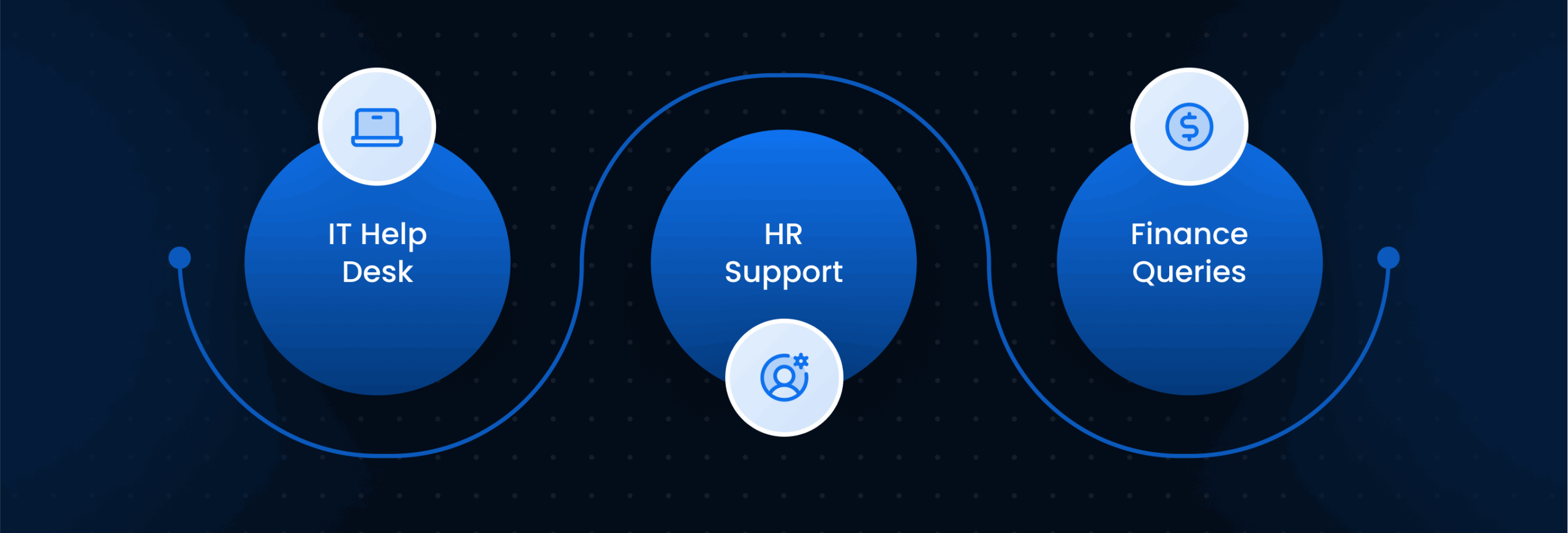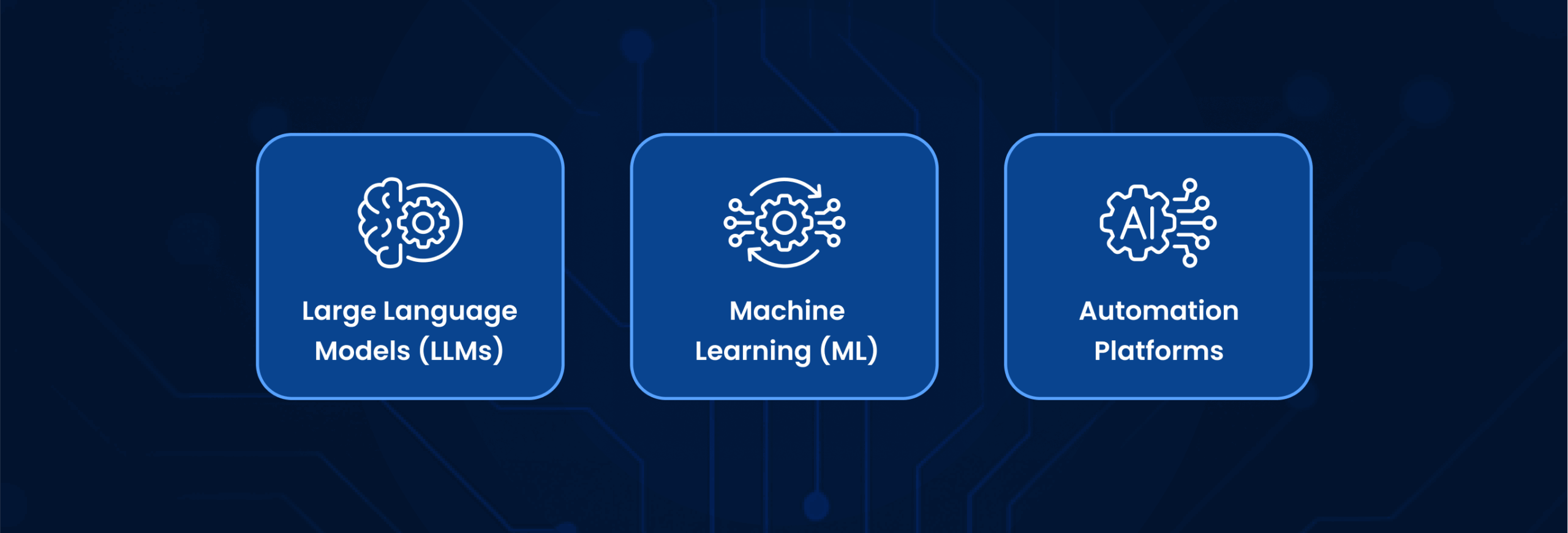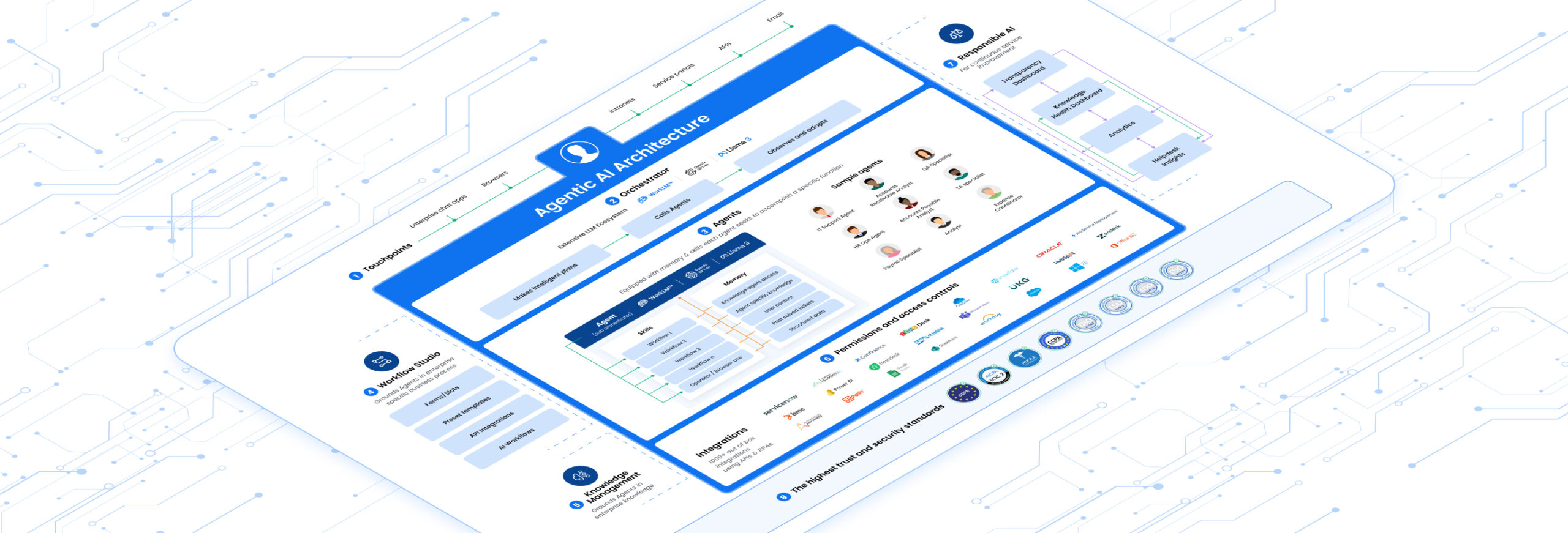Introduction
As a technology leader, you’re constantly looking for the next breakthrough that delivers real business value. You’ve seen automation evolve, and now, you’re hearing more about artificial intelligence. This brings up a critical question for your 2025 strategy: what is conversational AI, and why does it matter now more than ever? It’s not just about chatbots that answer simple questions. Instead, it’s about creating intelligent, autonomous systems that can understand, reason, and act to solve complex employee issues, transforming your internal support from a cost center into a strategic asset.
Think about the last time an employee couldn’t access a critical application. The process likely involved finding the right support portal, creating a ticket, waiting for an agent, and then going back and forth to resolve it. Now, imagine that employee simply typing, “My laptop is running slow, and I can’t open Salesforce” into a chat window. An AI agent doesn’t just understand the problem; it immediately runs diagnostics, identifies a memory issue, clears the cache, and confirms with the employee that Salesforce now works, all in under two minutes. This scenario isn’t science fiction; it’s the new reality that a modern understanding of what is conversational AI brings to the enterprise.
Understanding What is Conversational AI Today
For many, the term “conversational AI” brings to mind the clunky, first-generation chatbots that followed rigid scripts. They were often more frustrating than helpful, like an automated phone menu that never has the option you need. However, the true answer to what is conversational AI in 2025 is vastly different.
Definition of Conversational AI in 2025
Conversational AI is a sophisticated form of artificial intelligence that enables machines to understand, process, and respond to human language in a natural, human-like way. Unlike basic chatbots that rely on pre-programmed keywords, modern conversational AI uses advanced technologies to grasp context, intent, and even sentiment. Consequently, it can handle complex, multi-step conversations and perform actions to resolve user requests autonomously. It’s the difference between a talking FAQ page and a brilliant, highly efficient IT support specialist who is available 24/7.
What is Conversational AI’s Underlying Technology?
The magic behind today’s powerful conversational AI isn’t a single technology but a symphony of interconnected systems working together. As a technology leader, you don’t need to be a data scientist to appreciate the architecture, but understanding the core components helps clarify exactly what is conversational AI and what it can do for you.
Key Technologies Behind Conversational AI
At its heart, conversational AI is powered by several key innovations:
-
Large Language Models (LLMs): These are massive, deep-learning models trained on enormous datasets of text and code. LLMs, like the ones powering GPT-4, give the AI an incredible grasp of language, context, and reasoning. As a result, they can understand nuanced requests far beyond the scope of older systems.
-
Machine Learning (ML): ML algorithms allow the AI to learn from every interaction. This means your conversational AI gets smarter over time, continuously improving its accuracy and ability to resolve new and unique problems without constant manual reprogramming.
-
Automation Platforms: These are the engines that allow the AI to do things. For example, through secure integrations, the AI can connect to your existing systems to reset a password, provision software, or check the status of a finance request.
How Conversational AI Works (NLU, Dialogue Management, NLG)
To truly grasp what is conversational AI, it helps to understand its three-stage process for handling any user request:
- Natural Language Understanding (NLU): This is the “listening” part. When a user types or speaks, NLU breaks down the language to figure out what they actually want, their intent. It goes beyond keywords to understand context. For instance, it knows that “My computer is freaking out” and “I’m getting the blue screen of death” are both urgent IT hardware issues.
- Dialogue Management: This is the “thinking” part. Once the AI understands the intent, the dialogue manager decides what to do next. It maintains the context of the conversation, asks clarifying questions if needed (“Which application are you having trouble with?”), and accesses integrated systems to find information or trigger an action.
- Natural Language Generation (NLG): This is the “responding” part. NLG crafts a natural, human-like response in plain English. Instead of a robotic “Request Received,” it might say, “I see you’re having trouble with your VPN. I’m running a diagnostic now to check the connection. This should only take a moment.”
Exploring What is Conversational AI in Action
The theory is impressive, but the practical applications are what drive business value. The different types of conversational AI systems allow for a tailored approach, ensuring you have the right tool for the job.
Types of Conversational AI Systems
In the enterprise, conversational AI isn’t one-size-fits-all. It typically falls into a few categories:
- Chatbots: The simplest form, often used for basic, FAQ-style queries. They are good for answering “What are the company holidays?” but struggle with anything more complex.
- Virtual Assistants: These are more advanced, like Siri or Alexa. They can handle a broader range of commands but are often limited to the ecosystem they operate in.
- Agentic AI for the Enterprise: This is the cutting edge and Leena AI’s specialty. These are not just conversationalists; they are autonomous agents. They are designed to deeply integrate with enterprise systems (like ServiceNow, Workday, or SAP) to resolve complex, end-to-end processes. This is the solution that truly moves the needle on operational efficiency.
Use Cases and Examples of Conversational AI
When you ask, “what is conversational AI‘s real-world impact?” look no further than your own internal ticketing queues. Every ticket represents a moment of lost productivity for an employee.
- IT Help Desk: An employee needs access to a software license. Instead of creating a ticket, they ask the AI. The AI verifies their role, checks for license availability, provisions the software, and sends a confirmation, all in under a minute.
- HR Support: A manager wants to initiate a promotion for a team member. The AI guides them through the process, pulls the necessary performance data from the HR system, and pre-fills the required forms for approval.
- Finance Queries: An employee asks, “Why wasn’t my travel expense for the Chicago trip approved?” The AI checks the expense report in the finance system, identifies a missing receipt, and tells the employee exactly what they need to upload to get it approved.

Unlocking Business Value: What is Conversational AI’s Impact?
Ultimately, as a leader, you need to know the bottom-line impact. Adopting this technology isn’t just about modernizing; it’s about building a more efficient, resilient, and productive organization.
Benefits of Conversational AI for Organizations
- Drastic Cost Reduction: By automating the resolution of up to 70% of internal support tickets, you significantly reduce the operational costs associated with your service desks.
- Increased Employee Productivity: When employees get instant resolutions, they can get back to their actual jobs faster. This boost in productivity across your entire workforce delivers immense value.
- 24/7 Availability: AI doesn’t sleep or take holidays. It provides consistent, high-quality support around the clock, which is crucial for large, geographically dispersed companies.
- Actionable Data Insights: Every conversation is a data point. Analyzing this data reveals systemic issues, common points of friction, and opportunities for process improvement that were previously hidden in your ticketing backlog.
Challenges and Limitations of Conversational AI
Of course, no technology is a silver bullet. A clear-eyed view of what is conversational AI also means acknowledging its challenges.
- Integration Complexity: The AI is only as good as the systems it can connect to. Successful implementation requires robust and secure integration with your existing tech stack.
- Initial Training: While modern AI learns quickly, it needs to be trained on your company’s specific processes and knowledge bases to be effective.
- Managing Exceptions: There will always be complex, novel issues that require human expertise. The key is to have a system that can seamlessly hand off these conversations to a human agent with full context.
The Next Frontier: What is Conversational AI by Leena AI?
At Leena AI, we believe the answer to “what is conversational AI?” is an AI that doesn’t just talk but acts. We have pioneered the use of Agentic AI specifically for enterprise support, creating a new standard for what businesses should expect from automation.
Leena AI’s Conversational AI Capabilities for Enterprises
We provide a powerful, enterprise-grade platform designed to be the single gateway for all employee needs. Our AI is built with the security, scalability, and integration capabilities that large organizations demand. We don’t just offer a chatbot; we deliver a fully autonomous agent that becomes a core part of your support infrastructure.
Pioneering Agentic AI in IT for Unmatched Value
Where Leena AI truly shines is in our “Agentic AI in IT” solutions. While other tools might deflect a ticket, our AI agent resolves it.
For example, a common ticket is a password reset or account lockout. A basic system might send a link to a reset page. Leena AI’s agent, however, authenticates the user’s identity through multi-factor authentication, connects directly to your Active Directory, performs the reset, and confirms with the user that they can log in successfully.
Similarly, for application access requests, our agent doesn’t just create a ticket for the IT team. It follows a multi-step, automated workflow:
-
It understands the user’s request for “access to Adobe Creative Cloud.”
-
It checks the user’s role and department against pre-approved policies.
-
It routes the request to the user’s manager for approval directly in Slack or Teams.
-
Once approved, it triggers the software provisioning process in your IT management system.
-
Finally, it notifies the employee with instructions on how to access the software.
This is the power of an agent, it takes ownership of the entire process from start to finish. This is what is conversational AI at its most advanced, and it’s how we deliver an unparalleled return on investment for our customers.
Frequently Asked Questions
1. What is conversational AI's main advantage over traditional chatbots?
The primary advantage is its ability to understand context and intent, not just keywords. This allows conversational AI to handle complex, multi-step requests and integrate with other systems to perform actions, while chatbots are typically limited to answering simple, pre-programmed questions.
2. How secure is using conversational AI with our enterprise systems?
Enterprise-grade platforms like Leena AI are built with security as a top priority. They use data encryption, secure APIs, and robust access controls to ensure that all interactions and data are protected. Furthermore, they are designed to comply with standards like GDPR and CCPA.
3. What is conversational AI's implementation process like?
Modern platforms are designed for rapid deployment. The process typically involves an initial discovery phase, followed by secure integration with your key systems (like ServiceNow or Workday), and then training the AI on your specific knowledge bases. With low-code platforms, you can often go live in a matter of weeks, not months.
4. How does conversational AI improve over time?
It improves through machine learning. Every interaction, every piece of feedback, and every resolved ticket is used to train the AI model, making it more accurate and effective at understanding and resolving employee issues over time.
5. What kind of ROI can we expect from implementing conversational AI?
The return on investment comes from multiple areas: hard savings from reduced ticket volumes and lower service desk costs, productivity gains from employees getting instant support, and improved employee satisfaction. Many large enterprises see a full return on their investment in under a year.
6. What is the next big trend for conversational AI in the workplace?
The next trend is the shift from reactive to proactive support. In the near future, conversational AI won’t just wait for an employee to report a problem. It will analyze system data to anticipate issues, like an expiring software license or a server reaching capacity, and take action to prevent the problem before it ever impacts an employee.














